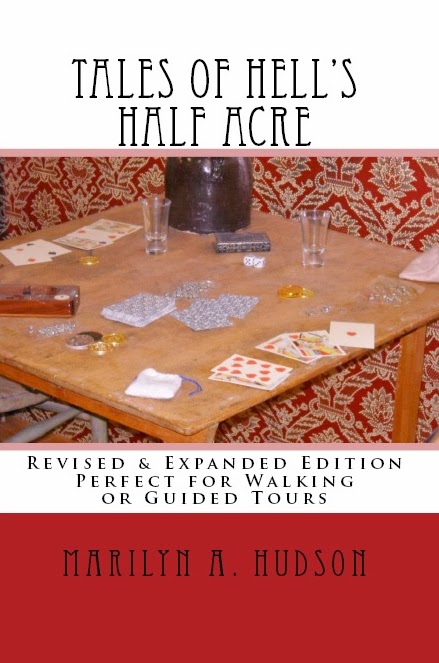In a residence in Oklahoma city owned by the 'notorious' Big Annie Wynn in 1900, were listed a group of women who informed the census taker their profession was 'prostitute'. Scattered among them were some men who were such things as musician or barber. Living space may have been at a premium in 1900. Listed in Block 37 (near Walker Streeet, all after Wynn were labeled as "roomers."
Residence 402 or 422 (writing is hard to read)
Annie Wynn, 34, b. July 1865, Il
Girtie Anderson, 21, b. Jan 1889, Il
Lulu Little, 18, b. March 1882
Gracie Maxwell, 23, May 1887, Il
Dana Goodwin, 22, b. Dec 1877, Ill
Mattie Probo, 33, b. Feb 1867, Ky
Gertie Hodge, 18, b. Feb 1882, Ky
Effie Fisher, 27 b. March 1873, IL
Harry Anderson, 22, b. Oct. 1877, KS "musician"
Ed Roberts, 30, b. April 1870, "Machinist"
Residence 406:
Susie Fields, 28 b. March 1873, KY
Fannie Richards, 27, March 1873 . NM
Laura Evans, 28, March 1872, KS
Girtie Sawyer, 20, Jan 1880, IL
Harry Brown, 32, b. Aug 1867, KS "Barber"
Mrytle Moore, 27, April 1873, TX
Bessie Moore, 25, 1875, TX
There is more than a good chance these names are all false. It was common for women in such work to create a persona and a history to suit their needs, cover their tracks, or keep them self hidden from those who might be looking for them. Papers around 1910 will note methods employed to get and keep workers for the sex trade. Some entered the business willingly, some because of being wronged by some man, but some were tricked into it through a method recorded in London in the 1700's. Young girls, travelers or runaways, were met at the local depot by a kindly person offering them help, shelter, or a ride to their destination. Instead, they were taken to a house of ill repute, drugged, seduced, and kept a prisoner until they too joined the "stable."






